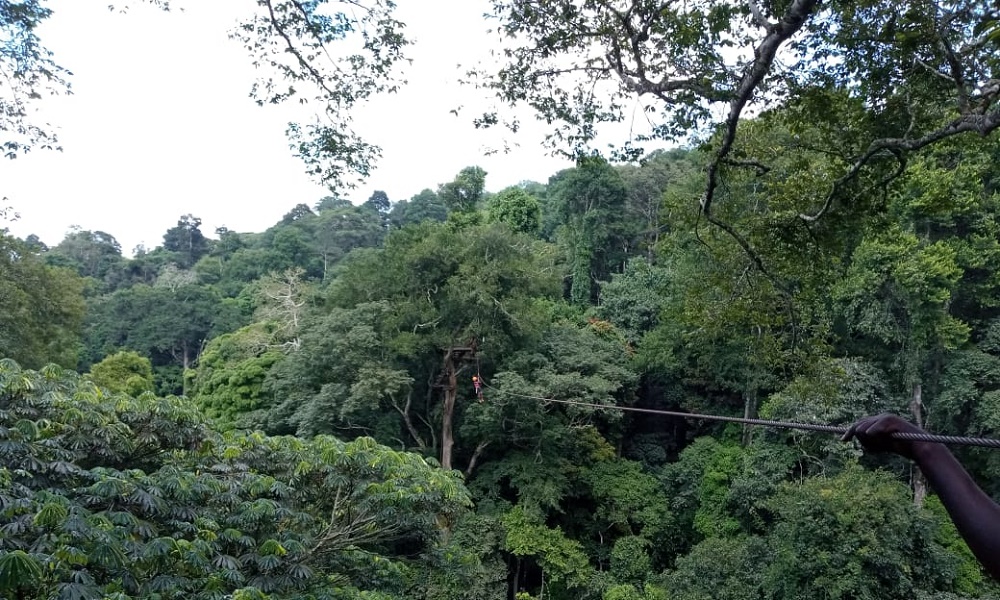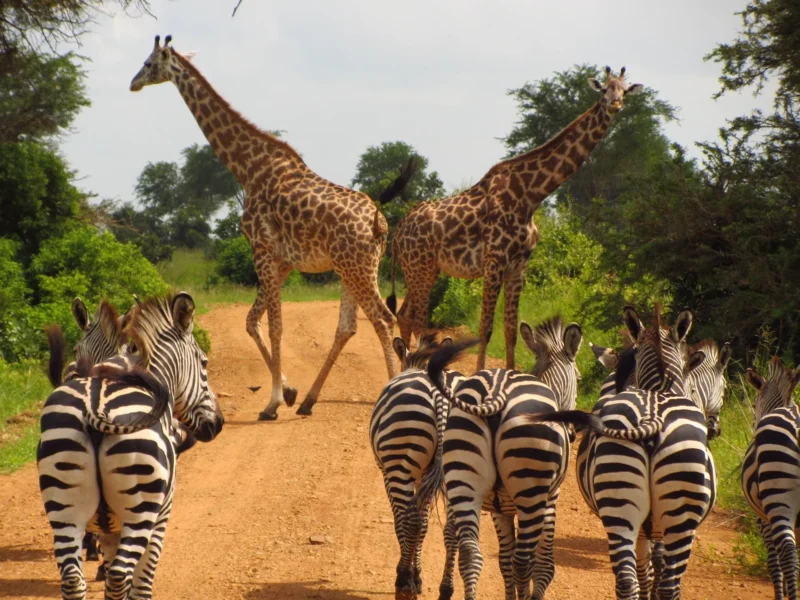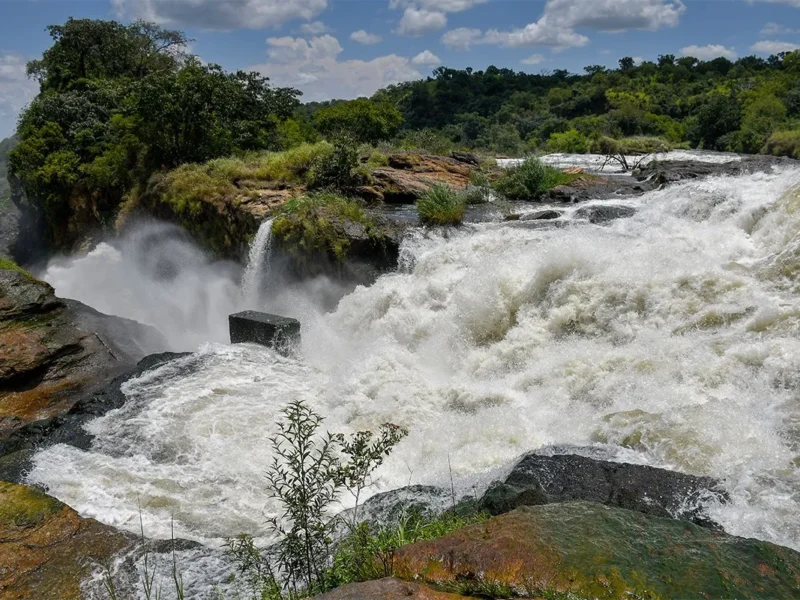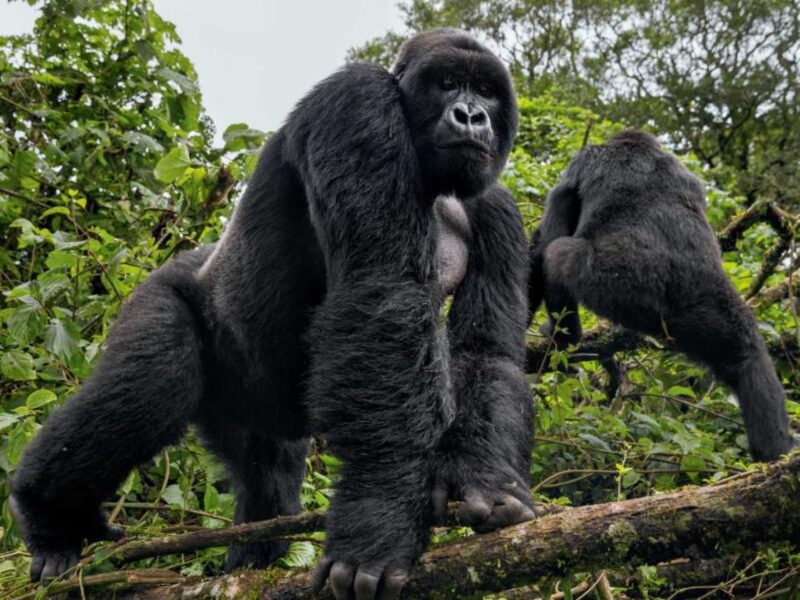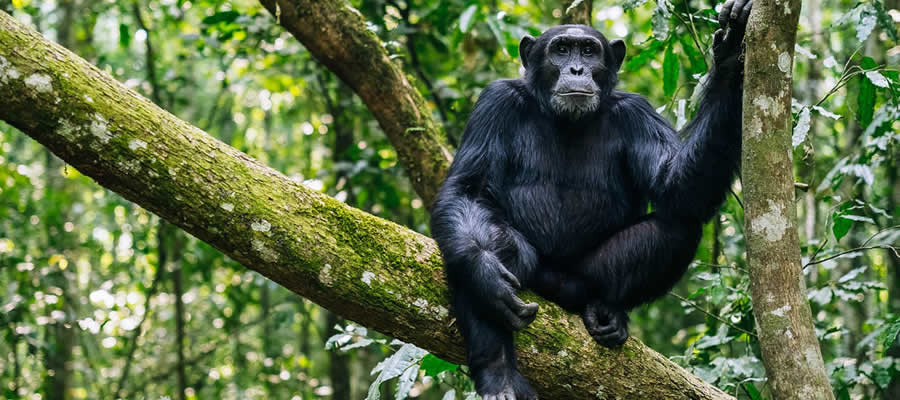
Guardians of the Green Hills: Exploring Burundi’s Hidden Primates
April 16, 2025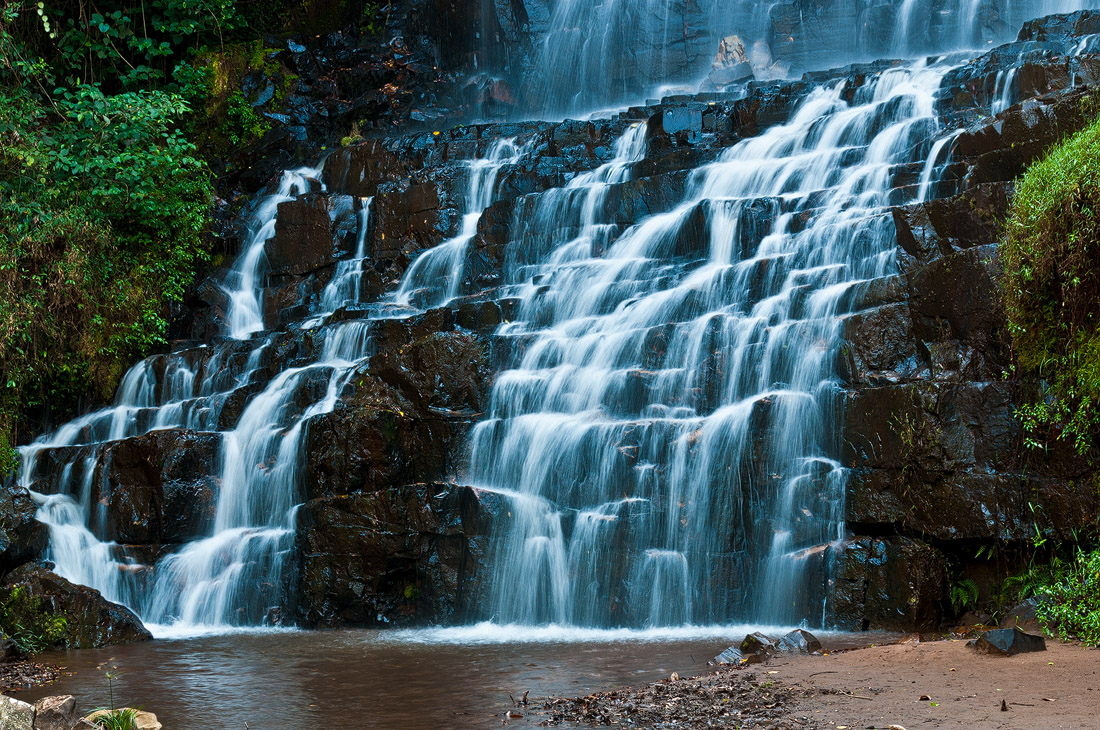
Karera Waterfalls
April 22, 2025Zip, Hike, and Explore: Discover Mabira Forest
Mabira Forest, Uganda’s largest surviving natural tropical rainforest, spans approximately 306 km² and is located in the Buikwe District, between Lugazi and Jinja, about 54 km east of Kampala. Established as a protected area in 1932, it serves as a vital ecological corridor in the Lake Victoria basin.
Ecological Significance
Mabira Forest is a biodiversity hotspot, home to over 315 bird species,312 tree species,218 butterfly specie, and 23 small mammal species, including rare primates like the Uganda mangabey. The forest’s rich biodiversity is attributed to its varied elevation, ranging from 1,070 to 1,340 meters above sea Level, and its location near Lake Victoria.
Activities & Attractions
1.Bird Watching
Mabira Forest is a birdwatcher’s paradise, home to over 315 recorded bird species. It’s one of the best forest birding spots in Uganda, especially for spotting rare and forest-dwelling species.
Notable Bird Species:
–African Grey Parrot– Highly intelligent and known for its mimicry skills; vulnerable due to habitat loss and pet trade.
–Forest Hornbill–These large birds are important seed dispersers in the forest ecosystem.
–Great Blue Turaco– A vibrant, fruit-eating bird with blue-green plumage and red crest, often seen gliding from tree to tree.
–Nahan’s Francolin– Endemic and globally threatened species, often found on the forest floor.
–Black-and-white-casqued Hornbill, Tit Hylia, Dusky Long-tailed Cuckoo, and Yellow-throated Tinkerbird also frequent the area.
Best Birding Spots: Around Griffin Falls, the Rainforest Lodge trails, and forest edges near Najjembe.
Best Time to Visit: Early morning (6–10 AM) and late afternoon (4–6 PM).
2.Nature Walks
Mabira boasts over 68 km of scenic forest trails, offering rich biodiversity and serene surroundings.
Highlights:
-Guided walks available at different lengths and difficulty levels.
-Medicinal plants, butterflies, monkeys (red-tailed, black-and-white colobus), and tree species can be observed.
-Walks typically start at Griffin Falls Camp or Rainforest Lodge, guided by trained local guides.
Popular Trails:
-Red Trail: Easy, ideal for families.
-Blue Trail: Moderate, good for wildlife spotting.
-Purple Trail: Longest, ideal for full-day forest immersion.
3.Mountain Biking
Rent a bike at Griffin Falls Camp and explore thrilling dirt trails through the forest’s interior.
Why It’s Special:
-Offers a unique way to experience the forest off the beaten path.
-Trails take you through thick canopies, across small bridges, and past local villages.
Bike rentals and helmets are available on-site.
Best time: Dry seasons (June–August, December–February) for safer terrain.
4.Zip Lining
One of the most exciting activities at Mabira! Operated by Griffin Falls Camp, the zip line canopy tour lets you glide above the forest at exhilarating heights.
Experience:
-zip lines run between giant ancient trees.
-Offers an eagle’s-eye view of the forest, monkeys in the canopy, and rare birds.
Safety: Professional guides ensure full safety harnessing and briefings.
5.Camping
Two main places offer overnight stays in the forest:
Griffin Falls Camp– Budget-friendly option, perfect for campers and backpackers.
-Basic tents and dormitory-style huts available.
-Communal meals and campfire experiences.
Rainforest Lodge Mabira– A mid-range eco-lodge inside the forest.
-Offers private cottages with balconies and forest views.
-Full restaurant, solar power, and nature-friendly amenities.
Perks: Night sounds of the forest, early morning birdcalls, and a digital detox vibe.
Accommodation Options
Griffin Falls Camp (Mabira Forest Camp)
Griffin Falls Camp is a budget-friendly eco-lodge situated on the edge of Mabira Forest, approximately 10 km off the Kampala–Jinja highway Managed by the Mabira Forest Integrated Community Organization (MAFICO), the camp reinvests its profits into community development projects such as tree planting, education, and water sanitation
Accommodation
-Self-contained Eco-Nests (Twin): Private, eco-friendly units with en-suite facilities
-Modest Bandas (Twin): Basic bandas suitable for budget travelers
-Quadruple Banda: Larger bandas accommodating up to four guests
-Camping: For those preferring a more rustic experience
Facilities:
-Restaurant: Offers a variety of African and Western dishes
-Activities: Bird watching, nature walks, chimpanzee trekking, and ecological studies.
Rainforest Lodge Mabira
Rainforest Lodge Mabira is a mid-range eco-lodge nestled within the forest reserve, offering a tranquil retreat with modern amenities. Constructed using local materials, the lodge harmonizes with its natural surroundings, providing guests with a unique rainforest experience.
Accommodation
-12 Independent Timber Cabins: Each with en-suite facilities and private forest-view deck.
Facilities:
-Swimming Pool: For relaxation amidst nature.
-Sauna and Massage: Wellness services to rejuvenate guest.
-Restaurant: Serves international cuisine in a serene atmosphere.
-Conference and Seminar Facilities: Ideal for corporate retreat.
Activities:
-Forest Walks: Guided tours to explore the rich biodiversity.
-Mountain Biking: Adventurous rides through forest trail.
-Bird Watching: Opportunities to spot various bird species.
-Zip Lining: Experience the forest canopy from above.
Little Kingston-Da-Global Village
Located near the Mabira Forest entrance in Najjembe, Little Kingston-Da-Global Village offers a more rustic and communal lodging experience While specific details are limited, the establishment is known for its budget-friendly rates and a vibrant, culturally immersive atmosphere.
Accommodation:
-Dormitory-style Rooms: Shared accommodations suitable for backpackers and groups.
-Private Rooms: Basic rooms for couples or small groups.
Facilities:
-Community Kitchen: Guests can prepare their own meas.
-Common Areas: Spaces for socializing and relaxation.
-Cultural Activities: Opportunities to engage with local traditions and crafts.
Conservation Efforts
Mabira Forest faces threats from deforestation and urban expansion. Conservation initiatives include the restoration of degraded area, replanting indigenous trees, and collaborative forest management with the local community. These efforts aim to preserve the forest’s biodiversity and ecological functions.
Getting there
Mabira Forest is easily accessible from Kapala
-By Car: Drive east on the Kampala–Jinja highway, turning off at Najjeme. The forest entrance is nearby.
-By Public Transport: Take a minibus-taxi from Kampala’s Old Taxi Park heading towards jinja, alight at Najjembe Market, and walk to the forest center.
Best Time to Visit:
Dry Seasons (Best Weather for Activities):
-December to February
-June to August
Why these months?
-Trails are dry and easier to hike or bike.
-Visibility is better for birdwatching and wildlife spotting.
-Zip lining and camping are more comfortable (less rain = fewer mosquitoes and mud).
Rainy Seasons (Good for Lush Scenery & Fewer Crowds):
-March to May
-September to November
Pros:
– The forest is incredibly lush and vibrant.
– Waterfalls (like Griffin Falls) are more dramatic.
– Fewer tourists = quieter trails.
Cons:
– Trails can be muddy and slippery.
– Some outdoor activities may be limited or less enjoyable due to rain.
Birdwatching Tip:
While birds are present year-round, December to February is especially good — many species are nesting, and migratory birds from Europe and North Africa may be passing through.

